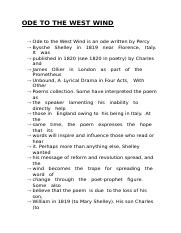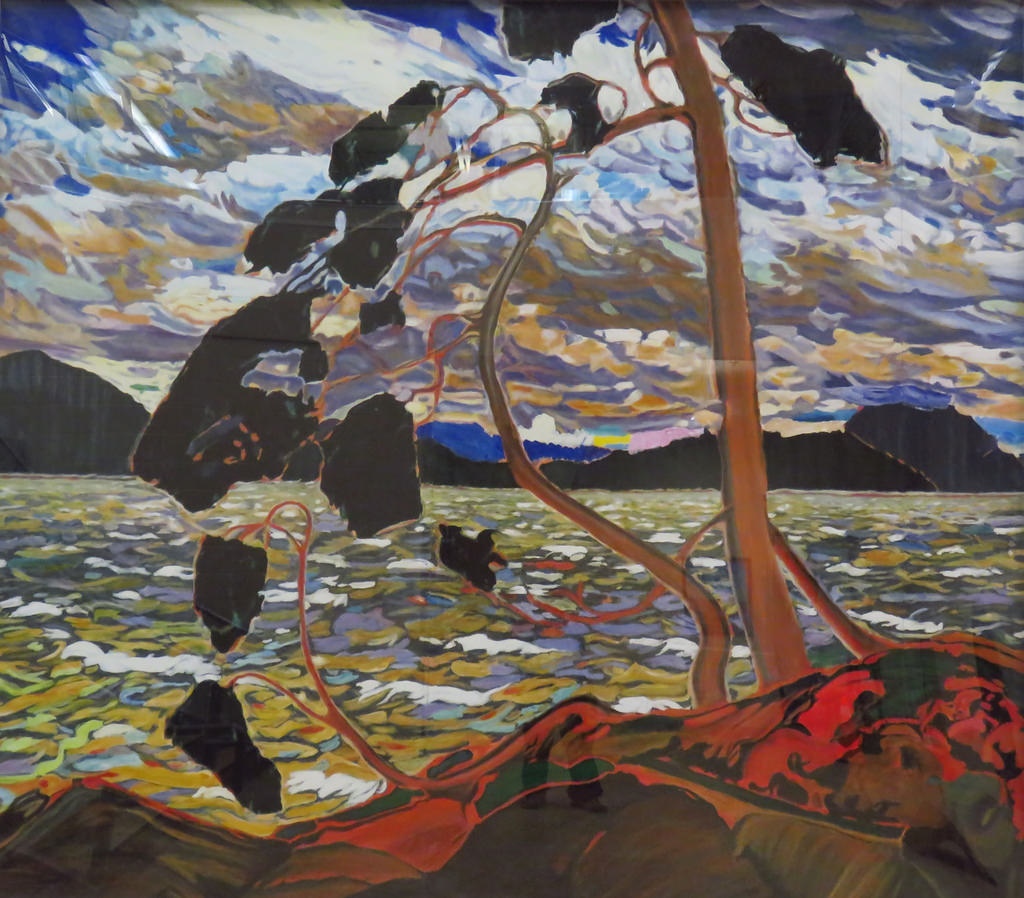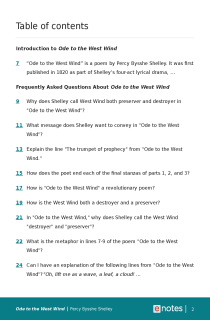Percy Bysshe Shelley was a Romantic poet who is widely regarded as one of the greatest lyric poets in the English language. He was born in Sussex, England in 1792, and was educated at Eton and Oxford University. Despite his privileged upbringing, Shelley was a radical thinker and a vocal advocate for social and political reform. He was deeply influenced by the ideas of the French Revolution and was an outspoken critic of the British government and the monarchy.
One of Shelley's most famous poems is "Ode to the West Wind," which was written in 1819. In this poem, Shelley personifies the West Wind as a powerful force of nature that is capable of shaping the world around it. The West Wind is depicted as a fierce and wild entity that is able to sweep across the landscape, carrying with it the seeds of change and renewal.
The poem begins with an invocation to the West Wind, as Shelley asks it to "O wild West Wind, thou breath of Autumn's being, / Thou, from whose unseen presence the leaves dead / Are driven, like ghosts from an enchanter fleeing" (lines 1-3). The West Wind is described as the breath of Autumn, a time when the leaves of the trees begin to die and fall to the ground. The wind is also depicted as a force that can drive away ghosts, suggesting its power to rid the world of the old and the dead.
Throughout the poem, Shelley reflects on the role of the West Wind as a catalyst for change and renewal. He writes, "Thou dirge / Of the dying year, to which this closing night / Will be the dome of a vast sepulchre" (lines 8-10). The West Wind is seen as a harbinger of death and the end of the year, but it is also associated with rebirth and renewal, as it carries the seeds of new life that will be planted in the spring.
In the final stanzas of the poem, Shelley expresses his desire to be like the West Wind, to be a force for change and renewal in the world. He writes, "Make me thy lyre, even as the forest is: / What if my leaves are falling like its own! / The tumult of thy mighty harmonies / Will take from both a deep, autumnal tone" (lines 26-29). By asking the West Wind to make him its lyre, Shelley is expressing a desire to be a vessel through which the wind's power can be channeled. He wants to be a force for change and renewal, just like the West Wind.
Overall, "Ode to the West Wind" is a powerful and evocative poem that reflects Shelley's belief in the transformative power of nature. The West Wind is depicted as a force of change and renewal, and Shelley's desire to be like it suggests his own desire to be a catalyst for change in the world. So, this is a brief overview of Shelley's "Ode to the West Wind."
Ode to the West Wind by Percy Bysshe Shelley

By the use of the plural, the poet is able to show that there is some kind of peace and pride in his words. V Make me thy lyre, even as the forest is: What if my leaves are falling like its own! Oh, lift me as a wave, a leaf, a cloud! Shelley has perfectly blended the three perspectives in a single poem, i. This energetic rhyme scheme twinned with the controlled form of the sonnet for each of the stanzas reflects the vigour of revolution, but also underscores how it has to be, according to Shelley, controlled, not anarchistic. He has already described it as the Destroyer. Both are constantly trying to reinvent themselves. Canto 4 Stanza One If I were a dead leaf thou mightest bear; If I were a swift cloud to fly with thee; A wave to pant beneath thy power, and share Here, the speaker finally brings his attention to himself. How does Shelley address the west wind as a force of death and decay and why does he welcome them? The last canto differs from that.
Ode to the West Wind

Heaven and Ocean are like large trees. The leaves are various colours, including yellow, black, and red. Revolutions, like the In the end the poet has a very optimistic viewpoint. The West Wind is like the Tyger, but the West Wind cannot be seen but it is still just as sublime. Stanza Five The trumpet of a prophecy! One wind might bring destruction but that same wind can also bring forth new life; it has both the power to take life and give it. Be thou me, impetuous one! MLN, 1920 , XXXV, 97. That is why it can be said that the entire poem contains five sonnets.
Ode to the West Wind: A Beautiful Masterpiece by Shelley

IV If I were a dead leaf thou mightest bear; If I were a swift cloud to fly with thee; A wave to pant beneath thy power, and share The impulse of thy strength, only less free Than thou, O uncontrollable! Another theme identifiable in the poem is nature and its power to be both beautiful and destructive. As a destroyer the wind drives away the pale dry leaves of trees and preserves the seeds in the moist earth for germination in the coming spring-time. So, he wants to "fall upon the thorns of life" and "bleed" 54. The West Wind shows the natural way of seasons. The "clouds" can also be compared with the leaves; but the clouds are more unstable and bigger than the leaves and they can be seen as messengers of rain and lightning as it was mentioned above. Stanza Two The impulse of thy strength, only less free Than thou, O Uncontrollable! Be thou, Spirit fierce, My spirit! Journal of Jixi University, 2008. The ode was a traditionally lofty form used by the ancient Greeks and Romans to praise the elite statesmen and emperors.
Shelley's "__ to the West Wind" Crossword Clue Answers, Crossword Solver

How is Ode to the West Wind a revolutionary poem? Publications of the Arkansas Philological Association, 8. In a biblical way, they may be messengers that bring a message from heaven down to earth through rain and lightning. Be thou, Spirit fierce, My spirit! The Longman Anthology of British Literature. Source: Harold, Bloom, Percy Bysshe Shelley, Modern Critical Views. Similarly, the poet wishes for reform in society.








